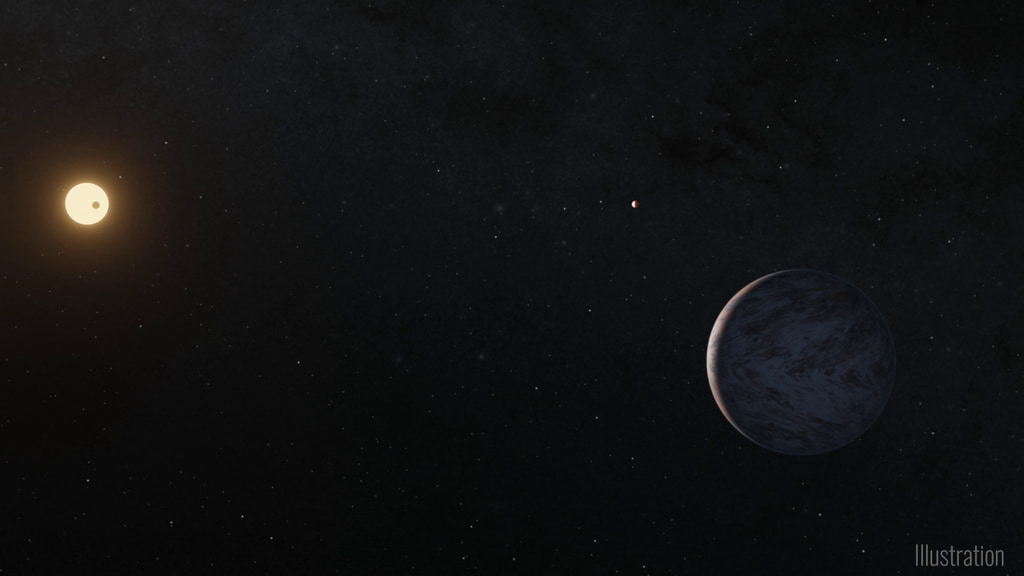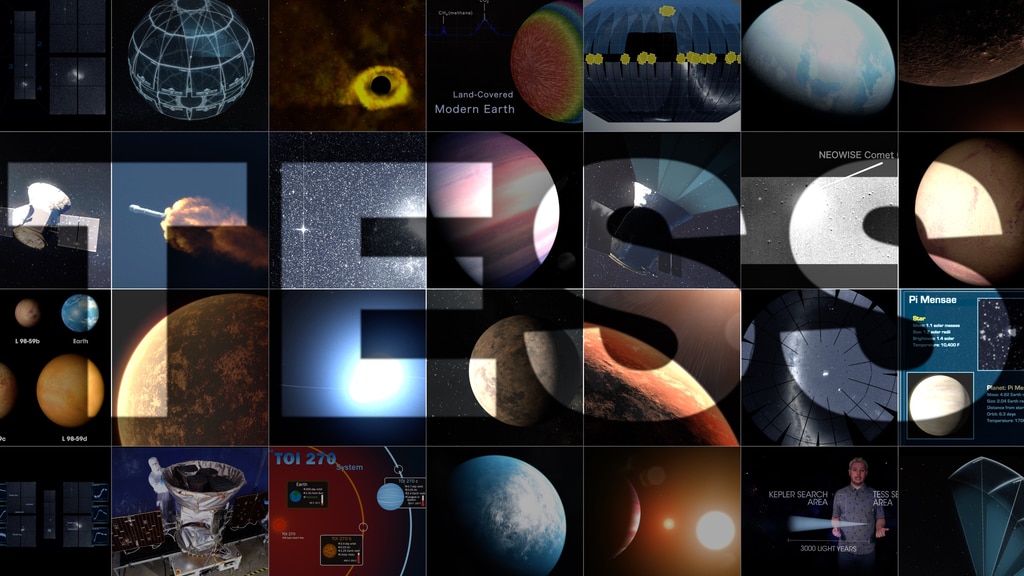TESS Mission’s First Earth-size World in Star’s Habitable-zone
Take a tour through TOI 700, a planetary system 100 light-years away in the constellation Dorado. One of the system’s residents is TOI 700 d, the first Earth-size habitable-zone planet discovered by NASA’s Transiting Exoplanet Survey Satellite.
Credit: NASA’s Goddard Space Flight Center.
Music: "Family Tree" from Universal Production Music
Watch this video on the NASA Goddard YouTube channel.
Complete transcript available.
NASA’s Transiting Exoplanet Survey Satellite (TESS) has discovered its first Earth-size planet in its star’s habitable zone, the range of distances where conditions may be just right to allow the presence of liquid water on the surface. Scientists confirmed the find, called TOI 700 d, using NASA’s Spitzer Space Telescope and have modeled the planet’s potential environments to help inform future observations.
TOI 700 is a small, cool M dwarf star located just over 100 light-years away in the southern constellation Dorado. It’s roughly 40% of the Sun’s mass and size and about half its surface temperature. The star appears in 11 of the 13 sectors TESS observed during the mission’s first year, and scientists caught multiple transits by its three planets.
The innermost planet, called TOI 700 b, is almost exactly Earth-size, is probably rocky and completes an orbit every 10 days. The middle planet, TOI 700 c, is 2.6 times larger than Earth — between the sizes of Earth and Neptune — orbits every 16 days and is likely a gas-dominated world. TOI 700 d, the outermost known planet in the system and the only one in the habitable zone, measures 20% larger than Earth, orbits every 37 days and receives from its star 86% of the energy that the Sun provides to Earth. All of the planets are thought to be tidally locked to their star, which means they rotate once per orbit so that one side is constantly bathed in daylight.
The Spitzer data increased scientists’ confidence that TOI 700 d is a real planet and sharpened their measurements of its orbital period by 56% and its size by 38%. It also ruled out other possible astrophysical causes of the transit signal, such as the presence of a smaller, dimmer companion star in the system.
While the exact conditions on TOI 700 d are unknown, scientists used current information, like the planet’s size and the type of star it orbits, and modeled 20 potential environments for TOI 700 d to gauge if any version would result in surface temperatures and pressures suitable for habitability.
One simulation included an ocean-covered TOI 700 d with a dense, carbon-dioxide-dominated atmosphere similar to what scientists suspect surrounded Mars when it was young. The model atmosphere contains a deep layer of clouds on the star-facing side. Another model depicts TOI 700 d as a cloudless, all-land version of modern Earth, where winds flow away from the night side of the planet and converge on the point directly facing the star.
Researchers modeled 20 potential versions of TOI 700 d. This illustration is based on an ocean-covered simulation of the planet with a carbon-dioxide dominated atmosphere similar to that of early Mars. All the planets in the system are believed to be tidally locked to the star, which means they rotate once per orbit, so one side constantly faces the star. The stark temperature difference between the day and night sides create wind patterns and cloud formations very different from Earth’s in this version of TOI 700 d.
Credit: NASA's Goddard Space Flight Center/Chris Smith (USRA)
TESS transit data of TOI 700 b suggests the world is almost exactly Earth-size and is likely rocky, as shown in this animation.
Credit: NASA's Goddard Space Flight Center/Chris Smith (USRA)
TOI 700 c is around 2.6 times Earth's size and is likely gaseous.
Credit: NASA's Goddard Space Flight Center/Chris Smith (USRA)
The outermost planet, TOI 700 d, is the only one of the known worlds in this system in the habitable zone. It is about 1.2 times Earth’s size, and, as shown in this animation, is probably rocky.
Credit: NASA's Goddard Space Flight Center/Chris Smith (USRA)
The architecture of the TOI 700 system is shown in this animation that starts edge-on and then moves to a top-down view. The only planet currently known to be in the habitable zone is TOI 700 d.
Credit: NASA's Goddard Space Flight Center/Chris Smith (USRA)
Researchers created 20 different 3D climate models of TOI 700 d to determine if any version resulted in surface temperatures and pressures suitable for what scientists regard to be potentially habitable worlds. The simulations used a variety of surface types and atmospheric compositions. This animation shows the temperature and wind patterns for a cloudless, all-land planet with an atmosphere similar to Earth's. The winds move away from the night-side of the planet and converge on the point directly facing the star. The simulated data shows what detectable molecules are in the atmosphere.
Credit: Engelmann-Suissa et al./NASA's Goddard Space Flight Center
Another simulation of TOI 700 d depicts an ocean-covered world with a dense, carbon-dioxide-dominated atmosphere similar to what scientists suspect surrounded Mars when it was young. The result is an environment where the temperature is almost uniformly hot everywhere on the planet.
Credit: Engelmann-Suissa et al./NASA's Goddard Space Flight Center
For More Information
Credits
Please give credit for this item to:
NASA's Goddard Space Flight Center. However, individual items should be credited as indicated above.
-
Producer
- Scott Wiessinger (USRA)
-
Animator
- Chris Smith (USRA)
-
Science writers
- Jeanette Kazmierczak (University of Maryland College Park)
- Francis Reddy (University of Maryland College Park)
-
Scientist
- Gabrielle Engelmann-Suissa (USRA)
-
Narrator
- Barb Mattson (University of Maryland College Park)
-
Visualizer
- Geronimo Villanueva (Catholic University of America)
Missions
This page is related to the following missions:Series
This page can be found in the following series:Release date
This page was originally published on Monday, January 6, 2020.
This page was last updated on Monday, January 6, 2025 at 1:33 AM EST.

